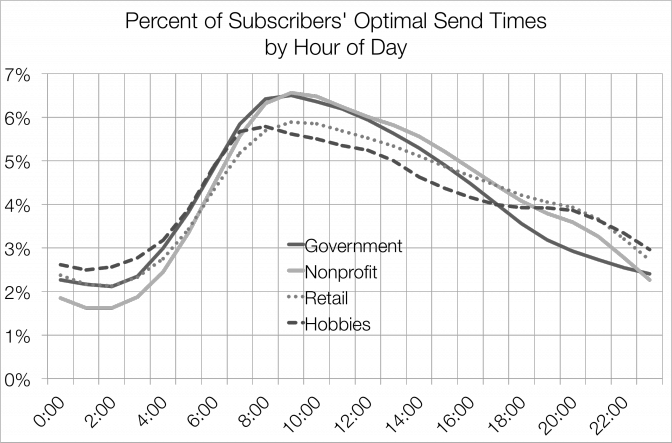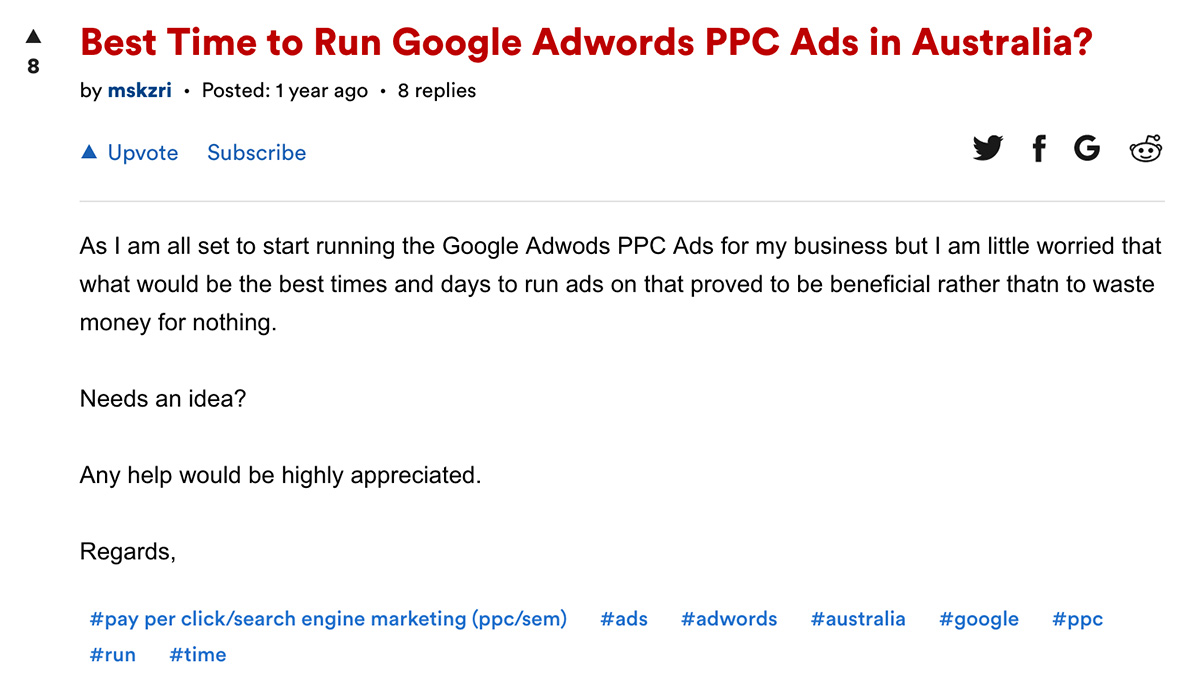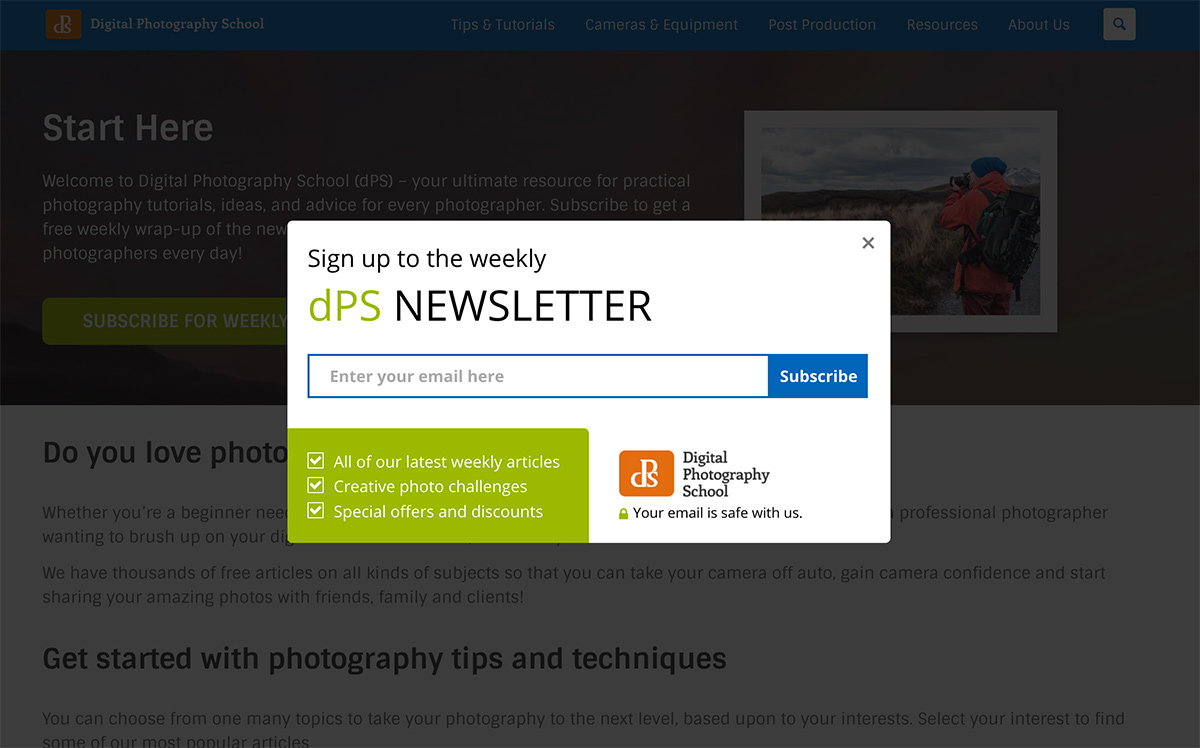
It’s funny the things you pick up as you spend more time in an industry. Little ideas, strategies, and patterns that are usually completely lost on you in the beginning stages but that the “experts” all seem to know.
The blogging industry is no different. There are so many details that, once discovered, make a huge difference to how you operate on a day-to-day level.
In today’s post I’m going to talk about one idea that I have always kind of known but never really appreciated fully. It makes an enormous difference to how many emails get opened, ads get clicked, etc.
I hope this helps someone out there do things a little quicker.
So what is this one detail we should all know?
When you work in a crowded space like blogging it’s important to try and get every little advantage that you can.
And while this detail might not sound that exciting when you first hear it, I guarantee it will impact the way you do things tomorrow.
So what is it? Here we go:
The time and place that your audience interacts with your blog is of paramount importance.
Make sure to differentiate this from the time that you send out your newsletters or publish a blog post as those are different things. Here we are talking about the time that they actually see and interact with it.
Let’s have a look at how this works and how it applies to all the things we are trying to do online.
The importance of timing on the web
I have been thinking about this topic for a while but was reminded of it today when I was listening to the latest episode of This American Life where the editor of the Dallas Morning News replied to a critical email from a newspaper reader in less than 20 minutes.
It occurred to me that (other than it being a really cool thing for the editor to do!) the email must have come at a time when the editor was receptive to such a criticism, had time to open and reply to the email, and was in the mood to actually do so.
That’s a lot of factors.
And I wonder how many of us know, on average, what time of the day/week we are most likely to hit that sweet spot with our readers and subscribers in our niche and on our lists specifically?
Taking it to the next level, I wonder how many of us know the same information for platforms like Facebook and Twitter when we are promoting our new articles or interacting with people about them?
This is really important stuff to figure out because a few hours could mean the difference between a post going viral by hitting a certain number of social shares, a sales target being reached, a post getting indexed well on Google because it got a huge amount of traction, etc.
So how do we do ensure that we’re publishing, emailing and setting adverts to go out a time when people are most likely to action them?
How to get the timing right for your blog
Here are some thoughts based on experiments that I’ve done on my own blog. As always, if you think I’ve missed anything exciting please head to the end of the post and leave me a comment.
1. Know your audience and their daily schedule
How much do you know about your readers and their daily schedule? What about the readers you want to reach but haven’t quite done so yet?
Let’s say that you have a blog about teaching. While general email marketing wisdom might suggest emailing your list at, say, 9am on a Wednesday, this has obvious problems for teachers who would be in the middle of a class!
Of course, we’re only talking about averages here, but every industry will be different and so it’s important to have at least a vague idea of your blog’s demographics, time that they are online, their habits, and so on. This is a very important starting point.
2. Send out a survey and get feedback
One way you address this in a direct way is to send out a survey to your readers and ask them directly when they would like to see your newsletters in their inbox. This is a really interesting tactic because it then sets up an expectation in the mind of the reader – they will be looking out for your content and feel like the have participated in the process of having it created.
Giving your readers a sense of ownership in your blog is a very powerful marketing tool. When someone feels like they have a stake in something they are more likely to share content, leave comments, and generally evangelize your brand more.

You can do this by simply publishing a blog post and asking people to respond in the comments with their preference. However, I prefer to send out an email survey with a service like Survey Monkey as then the results are private and you’re more likely to get detailed responses as people are responding straight out of their inbox.
Be careful about how you structure your questions. For example, just because someone says they would like something on a Wednesday doesn’t mean that Wednesday is the day that they will read it. Researching about how to craft your survey questions is really a worthwhile exercise.
3. Research industry standards and then compare
Around this time you’ll also want to take a look at your industry standards. This is important because you might actually be getting good numbers without knowing it. For example, I have had people ask me why their open rate of 20% is so low when actually it’s a full 5% to 10% higher than average!

Image source: MailChimp
There is some absolutely excellent research by Mail Chimp on some of this stuff and it’s a really good starting point. This is obviously very heavily catered towards email marketing but, seeing as that is a big part of what we bloggers do, it is a really good way to get an overall picture.
4. Get anecdotal advice from people in your industry
If you can’t find any solid research that comes from massive amounts of data then the next step is to look to those in your industry who may have run their own experiments.

Places like Warrior Forum and Inbound.org have a lot of really smart people who are extraordinarily generous about giving away the things that work for them. I am often pleasantly surprised at how much detail people are willing to share about their own “trade secrets”.
I’d highly recommend joining one of these and also looking for some niche-specific forums or communities where you can drill down in to the stuff that works for your particular topics. This is also a really good way to make contacts for collaborations, guest posts, etc.
5. Run split tests and compare
Of course you knew I was going to mention split testing! To be fair, this is really the only way to solidify the ideas that you have into actual real and practical information.
If this is new to you, split testing is essentially where you have two identical versions of an email or landing page and where you change one element and send it out to segments of your audience to see which performs best.
The element that you change might be a color, title, image or, as we’re doing here, the time that you are sending out the newsletter to your audience.
A/B testing can turn into a maddening and endless pursuit of the perfect result, and it often distracts you from things like creating really good content for your blog. For that reason, I’d recommend starting with a few basic email split tests and then move on to some slightly more complicated advertising tests like running the same advert at different times of the day. This can be easily done with Facebook advertising and most other platforms.
6. Train your readers to expect certain times
One thing that you will see a lot of bloggers do is send out their newsletters at the same time every week. This is an interesting tactic because, while it might not be the ideal time of the day, it trains people to expect the notification and thus might make it more likely to be opened.

One example of this is Digital Photography School which is a real powerhouse of content. Instead of sending out notifications of every article they encourage readers to sign up to a weekly summary which goes out via email and is also occasionally used for promotions.
Again, if you go down this road you’ll want to make sure you inform readers at the time of sign up so that they know what is going on. And, as always, you’ll need to test it for a period of time and then compare it to something else to see if it’s getting the desired results.
7. Stalk people on Twitter
This tip relates specifically to emails that you send out to other bloggers in your niche when you are trying to organize a collaboration, guest post, etc. as part of your ongoing blogging strategy. Of course I don’t mean actually stalk them, but using Twitter and social media to find out about the times they’re online and their preferences can be very useful.
IMO the craze of roundup posts are A) getting ignored by most visitors & B) not a tactic Google loves. New WB Friday https://t.co/K2wO64J5v5 pic.twitter.com/pF0KFTiZLa
— Rand Fishkin (@randfish) March 10, 2017
For example, have a look at this Tweet and subsequent video by majestic SEO dragon, Rand Fishkin. This is a prime example of how a little bit of research can save everyone time because it is clear, in this example, that Rand ain’t gonna do roundup posts. In my opinion, it could damage your chances at getting future responses from Rand if you send him a mass email asking for a reply (P.S. I’ve done that!).
A final word on timing
You might have got to the end of this post and decided that you still don’t think it is that important of a factor to spend all this time thinking about and that is okay.
But if that is you I’d encourage you to think of all the hours that go into your blog posts, newsletters, etc. and then think about how much of a waste it is to miss out on a few hundred/thousand views just because you’re sending it at a time when people can’t take an action. It’s especially sad if it’s a really helpful product or service that you’ve worked for months on.
You don’t have to get this stuff perfect, but a few little experiments or questions could give you dramatically different results, and those results might make your blogging, email marketing, and adverts a lot more effective.
Have you experimented with this?
I’d love to know whether any of you gals and guys have done any experiments with this. Do you find any particular day of the week effective? And how do you know that it is the best option for your blog? Please leave a comment below and let me know.


Hey Ramsey,
Knowing the audience is very important. It is just like when one is getting started. You first find a problem then provide a solution on the blog.
The guide can also be used in creating a product.
Yep, I agree.
I tested this with my newsletter and found my results were not what I expected. It had to do with how soon after the people in my niche are active in that niche. For example, if they tend to do it on Mondays, they seem to be more receptive on Tuesday mornings to reading the newsletter than Monday mornings. It’s as if their brain is wanting more the next day so that’s when I drop in my email.
Curious! I love it.
I think it also has to do with problem solving and self-improvement. For example, it’s like reading an article the next day and thinking, “oh, THAT’S what I did wrong.” Or, “So THAT’s how I could have solved that problem.”
Hi Ramsay,
Great article and a timely one I must say. I recently was researching on the best time to post a newsletter and to my surprise there are so many facts contradicting each other.
Even posts said Monday is the best time to post since people are charged up and then they contradicted themselves saying you should try posting in weekends because a difference actually helps to stand out and get seen.
Like you said, I feel, the secret is to experiment. I think inbound.org and survey-monkey are really effective means to getting an answer.
P.S. There is this little trick to send the same email with a different title only to the non-openers which works great. At least a few of those non-openers click the second time. 😀
Thanks for this tip.
-Swadhin
Oh I totally forgot to mention things like that! Great point.
Right on, Ramsay. Thanks for a great blog post!
I recently read an article by Buffer about the best times to post on Twitter, and I was amazed to see that they found posts between 2AM and 3AM EST generate the highest number of clicks and engagement (probably due to much less competition).
This is perhaps different than your thoughts on finding the right time for your existing audience (as opposed to new readers), but also worth investigating if you need to attract more visitors.
Wow that is an interesting one. I usually have to fight that time being down under and it always seeming to be the middle of the night in the USA.
Great stuff, Ramsey. In my niche, which is well-being, it can be hard to determine what times are best for viewing the newsletter as readers are very diverse, from students to parents, etc. I do like the idea of a survey which I might just give a try. Thanks for all the resources!
Let us know how you go.
You advice is fantastic and helps me a lot with my YouTube channel.
I send a weekly email every Friday and I think the consistency of that has kept my open rate up. It’s a small pool of people so far (200) but 75% open the email each week.
I have not noticed that regularity help with the views on YouTube Tube. I have a subscriber base of 2.2k people and I get almost 1k views in the first 48 hours. This seems to happen no matter when I post.
Reading you post makes me think I need to look into this topic a lot more.
Thanks for the sage advice.
Those are awesome numbers! Keep it up.
I am still testing this. I do believe that it’s important. What I am seeing is that the time of day changes throughout the year. I do not know why that is. It is similar content. Sometimes first thing in morning gets best results and other times it is afternoon. Evening has never been good for me. I guess people are more interested in relaxing and having fun as opposed to long reads.
Summer time is a little bit slower online usually. The thinking is that people are spending more time outside.
Hi, Ramsay!
I have done experiments, and I have noticed that Sunday is the worst time to send a newsletter. I’ve tested this, people don’t open it on a weekend because they’re likely to check the inbox on Monday, and until that point, a dozen new emails would already take the top spot. So we lose the chance to get the attention; especially if the ‘subject line’ isn’t worth clicking.
Yeah same for me.
One problem. We live on a round earth and all our readers are not in the USA. Time zones really complicates things
Yep, that’s why in the first point I talked about knowing your target audience. For most of us, the majority of traffic is in the US East Coast, but if you have a blog about a local city or something more isolated then you’re better off going for that timezone.
Hi Ramsay,
Thanks for such informative post on the timing.
Timing is important for facebook share.
From my personal experience, with correct timing, the post shared on facebook will have more engagements and tends to reach more people.
Agreed!
Thanks for your informative post Ramsay!
You’re welcome.
Hi Ramsay,
These are some great tips. I have to admit, I’m a pretty lazy blogger. I tend to just publish my blog posts when I feel like it.
I’ve just started growing my email list and was wondering when the best time to send emails to my subscribers is. I NEVER thought about sending them a survey to find out what they prefer. I’m going to do this.
After all, what good is an email list if no one is opening them up. I know that I’ve signed up for a couple of other marketers email lists just to see how they do things.
The one thing I noticed is that they are consistent with the days that they send the emails. So for instance, I know that every Saturday, I’ll get an email in my inbox.
I’m going to start using these tips for my own blog. Thanks for taking the time to share them with us Ramsay.
I know I really appreciate it and I learned a lot. I’m sure others feel the same way.
Have a great day!
– Susan
Please let me know if it makes a difference to it all. I’d love to hear.
Ramsey, why do you not put times or dates on articles or comments? Is it just to prevent people in the future from thinking your posts are antiquated?
Pretty much.
What a wonderful article this is. I will be reading this all over again and take down points just to keep in mind about this. I specially loved the idea of Survey Monkey and knowing when the readers like to read.
Glad you liked it!
Hi Ramsay,
this article really helped me to know the importance of time….you have really shared some valuable points on timing of blog post….would really like to follow them in future…!!
Thanks!!
Arvind
Glad you enjoyed it.
Hi Ramsay, and thank you for another great article.
I have a question -not so relevant to this topic, but I cannot ask in the specific post because it’s commenting closed.
As for the size of uploading photos on a WordPress website; if I compress a photo to be 25-30Kb, then how it will be a good also size to upload on social media? (e.g. FB & Pinterest).
I’m serious thinking to use Amazon S3 as cloud source to avoid such problems, and I’d really appreciate your opinion about it.
(I’ve just started create my blog).
Thank you in advance!
You probably don’t need to compress it that small, but you can use a CDN if you’re worried about traffic. Is your main worry bandwidth?
Well, not right now at the beginning, but I’d like to have good loading times. The blog I’m working on, is about beauty, fashion and healthy diet. I guess, there will be 3-4 photos on every article.
That’s totally fine. Just use a plugin like WP Smush and get them down to 80 – 200 kbps. If your server is good it shouldn’t cause a problem.
Really appreciate the post about timing your blogging. Been doing a lot of research about guest posting for SEO for myself and my clients and have found a ton of useful info on your website. Keep up the great work.
No problems.
I appreciate your thoughts on timing Ramsey. This is one area that I really didn’t think about too much. I’m posting on Monday and Wednesday morning east coast time (before most people get up). Then I’ll load up Buffer with my posts and some other bloggers posts too.
I still don’t think it matters to much when you post on a blog though. I think people should post regularly but aren’t we doing evergreen content that people are finding through Google or other search engines? People will hit the page whenever they search, right?
I see how posting at the right times on social media could matter and emails to readers definitely matter. Twitter is now using the “in case you missed it” thing just like FB does. So matter what time someone goes onto Twitter, they’ll see your post on their “in case you missed it” section if the algorithm thinks you want to see it.
I guess what I’m getting at is I’d rather just focus on writing and creating decent material instead of worrying about timing.
Appreciate all the great content on your site. Got a lot of great SEO stuff from you. Thanks!
I still have a theory that the number of social shares and links your get closest to the time of publishing has an impact on your rankings. It could be a total nutty theory but I’ve been working with it for a while and it seems to do okay.
Great informative post! Thanks Ramsay!
Wow! great article, Ramsay.
Another thing to put into consideration is; people tend to carve out specific time for different tasks. For instance I set out evenings (6:00pm, Nigerian time) for my emails.
So people (even though in same niche) might have different timing to opening your newsletter emails (for instance).
So I suggest sending out surveys to your audience will help.
Thanks once more,
Simon.